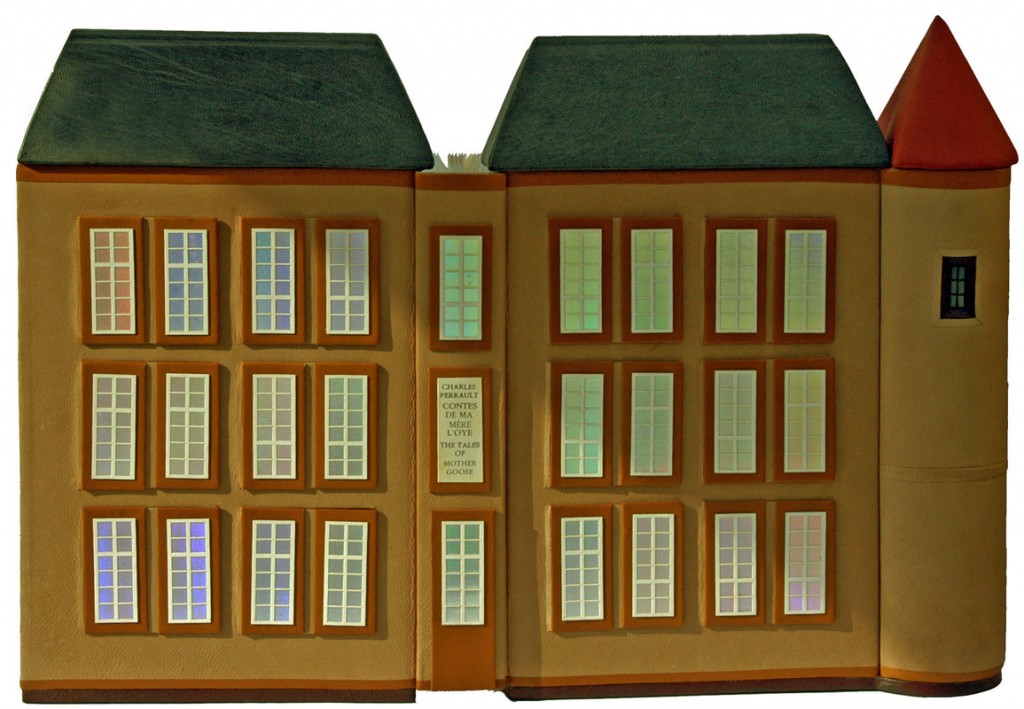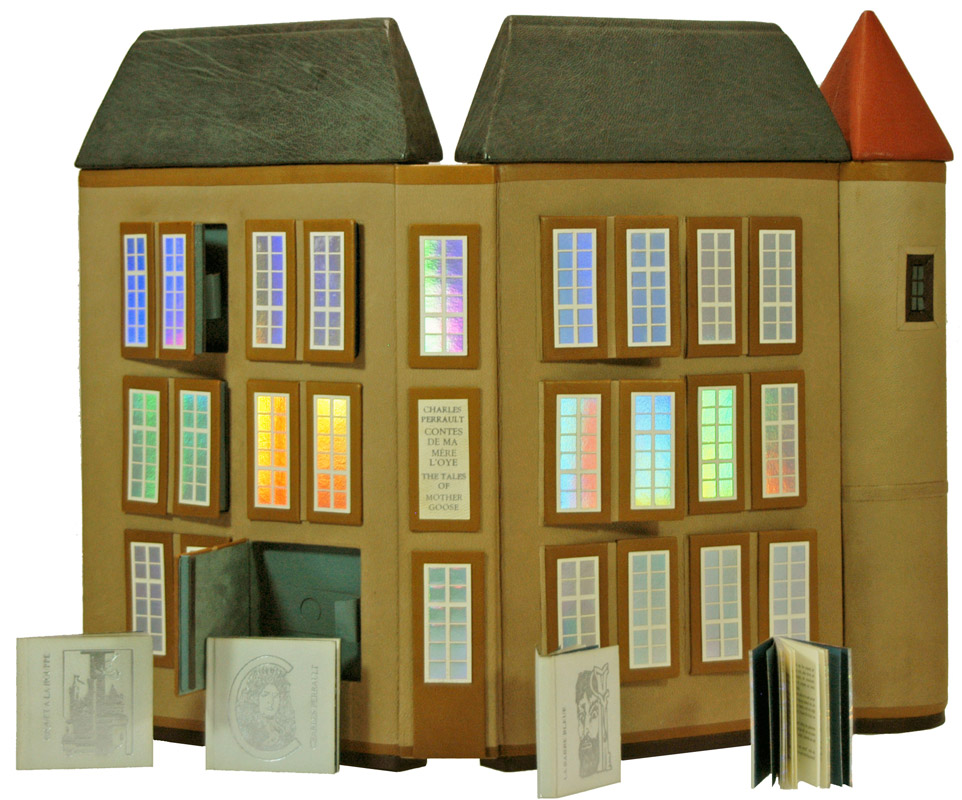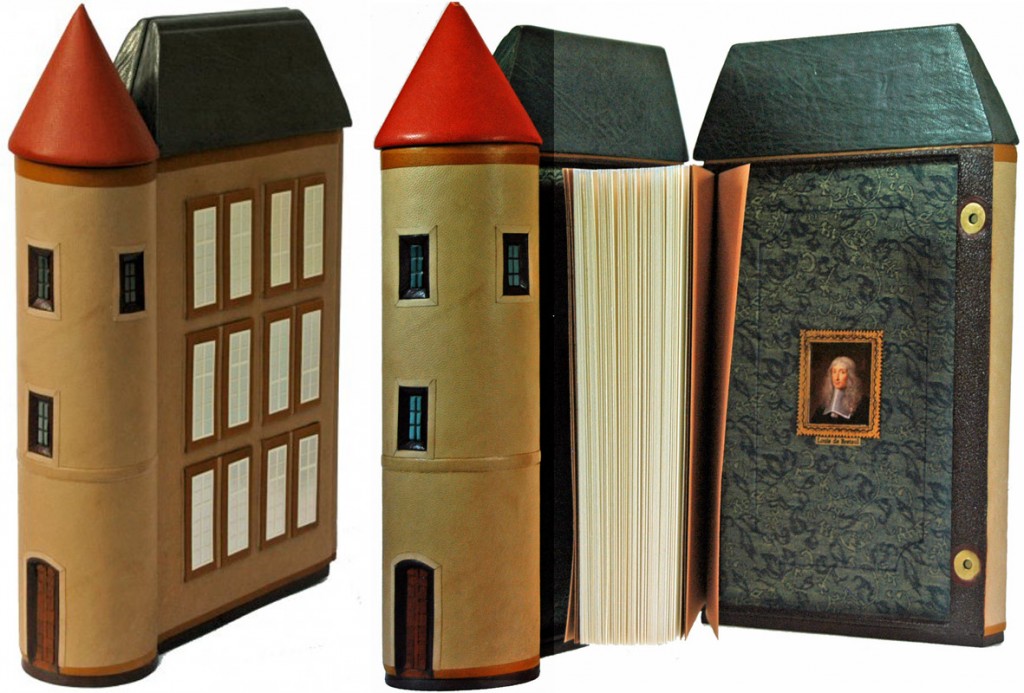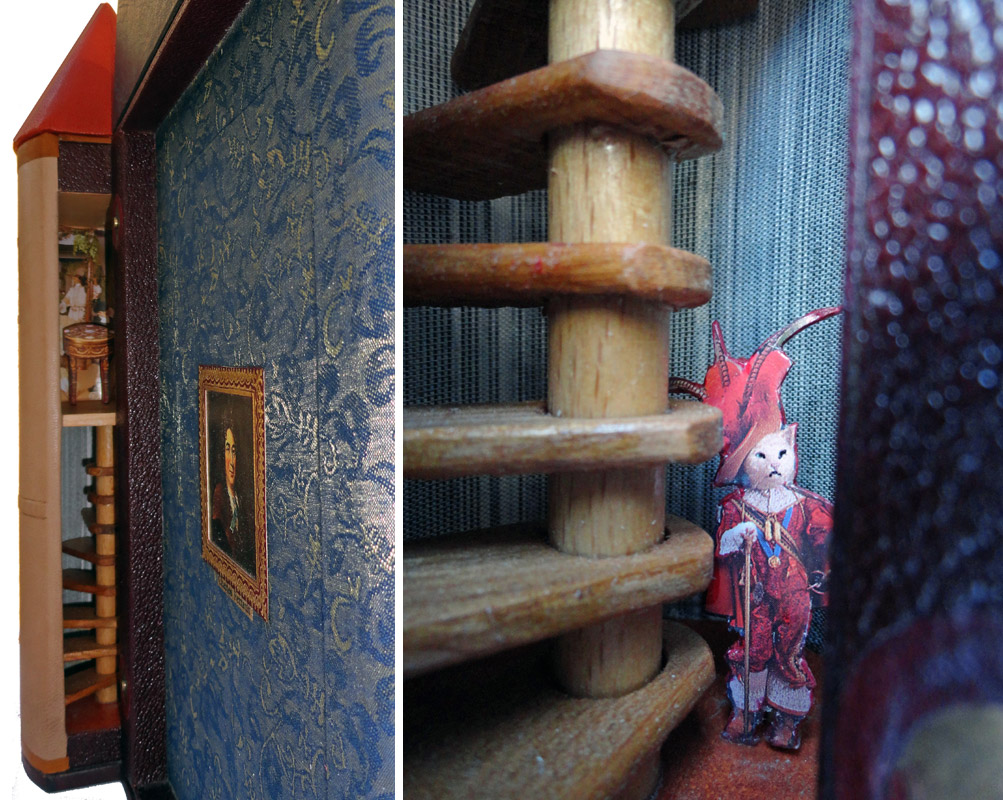Jan Sobota grew up engulfed by books, about 20,000 to be exact. His father was an avid collector of literature, most specifically children’s literature, filling their small house to the brim with books. Every available square inch of wall space was covered with bookcases leaving only the windows and doors untouched; before dinner books were cleared from the table and chairs. Eventually his father’s collection was moved to the barn after being converted into a library and office. Several books suffered from the passage of time and needed to be repaired. Sobota accompanied his father to trips to the bindery, eyeing the machinery and craftwork of the binders. One particular binder who peaked Sobota’s interest was Karel Silinger, working in Pilsen, Czechoslovakia as a designer bookbinder. At the time Pilsen attracted several artists creating a cultured and literate community.
Sobota began an apprenticeship with Silinger in 1954, learning binding techniques while conversing with artist, writers and actors. Sobota was accepted to a bookbinding program in Germany, but was unable to attend due to the Communist occupation at the time. Instead, he studied at the School for Applied Arts in Prague, where he was exposed to drawing, painting, sculpture and restoration of materials such as wood, metal, glass, ceramics, glass, paper and books. In 1957, Sobota completed his studies with both Silinger and at the School for Applied Arts.
Left on his own to work, Sobota struggled with developing his own style of binding. His first bindings matched the style of Silinger’s bindings and other artists he found inspiring. For a time, Sobota did not have access to foreign literature from restrictions put forth by the Communists and therefore it became difficult to further his studies of bookbinding until the mid-1960s. During this time he concentrated on the techniques of Czech early Gothic-style bindings, being introduced to Gothic box bindings. He began to consult with Czech bookbinding professor such as Emil Pertak and Vaclav Vladyka.
In 1966, the Communists began lifting restrictions on art, allowing more bookbinding exhibitions and lectures to enter Czechoslovakia exposing Sobota to master bookbinders such as Jindrich Svoboda and Jan Vrtilek. Sobota continued to develop his personal style of binding though he found experimentation to be a struggle from the confinement by deep-rooted techniques of standard bookbinding, believing that binders were being held back from innovation and future development. It wasn’t until 1977, after reading Philip Smith‘s New Directions in Bookbinding did Sobota find the courage to produce more sculptural bindings known as book-objects.
Sobota’s book-objects are sculptural box-bindings or flat bindings with a sculptural or relief box; the text is completely housed inside the sculpture keeping it safe from dirt and exposure. The construction of his book-objects are quite complex, but the books can be opened easily and read comfortably. Sobota never considered his work to be experimental. His intentions were to create something new, while serving the book by expressing its contents through his artistic and technical abilities. In 1979, he received the title ‘Meister der Einbandkunst’.
In 1984, Sobota was directed to Cleveland where he began working in the conservation lab at Case Western Reserve University; his latest position was as the Director of the Conservation Laboratory in the Bridwell Library of SMU in Dallas, Texas. Sobota was active in various bookbinding communities. As one of the initiators of the Society of Czech Bookbinders, he was elected their first president in 1997. Beginning in 1969, Sobota exhibited his bindings in 137 group shows and 32 individual shows, in addition to winning over 30 prizes for this work as a craftsman and educator.
In May of 2012, Jan Sobota passed away, months later at the Standards of Excellence conference, his wife Jarmila accepted the Lifetime Achievement Award presented by the Guild of Book Workers in which he was an active member. Sobota was gifted as an artisan and craftsman with a deep knowledge of conservation for both contemporary and historical bindings.
The design binding in this post is a compilation of works by Charles Perrault completed by Sobota in 2011. The box is styled after the location where Perrault lived and worked, the Chateau de Breteuil, a 17th century castle located near the Chevreuse Valley. The Chateau is well known for its elegant interiors and majestic brick and stone exterior.
The main text was published in conjunction with the 9th Biennales Mondiales de la Reluire d’Art in France in 2007 in an edition of 1,000 copies in which this is number 414. The additional 12 miniature books were published by Jan and Jarmila Sobota in Czech in 2007 in an edition of one. The box-binding (the tower and building exterior) are covered in both goatskin and calf in five different colors. Windows were cut from hologram glass and cover the ‘hollow boxes’ that house the 12 miniature books. The miniature books are covered in a gray goatskin with silver stamping and hologram silver gilt edges. The main text edges are gilt with hologram gold.
Blue silk doublures lined the inside covers of the box, which also include portraits of Charles Perrault and Louis de Breteuil (the original owner of the Chateau).
The tower is hollow with two floors connected by a wooden spiral staircase; on the first floor is an image of Puss in Boots (a character created by Charles Perrault) and on the second floor is a scene from Chateau de Breteuil lining the walls with a replica of the famous Teschen table (also known as the ‘Table of Europe’).
resources:
- The New Bookbinder: Journal of Designer Bookbinders. Volume 10, 1990. pg. 3 – 11
- Guild of Book Workers Newsletter. Number 203. August 2012, pg. 9




